How to achieve the highest efficiency? Is diagonal connection of heating radiators necessary?
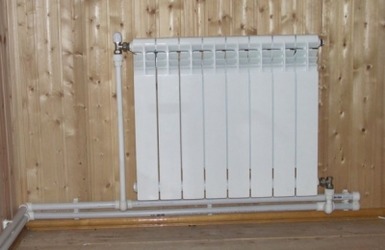
Currently there is Three standard schemes for installing heating radiatorsEach of them has its own characteristics and advantages of use.
The main aspect of choosing one or another connection method is the existing piping layout in the room.
As for the diagonal connection, it used mainly in private homes.
Content
Pros and cons of diagonal connection scheme
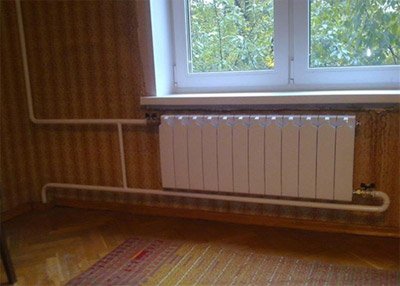
This method of connecting batteries is most effective. That is why it is most often used in private houses, not in apartments.
The efficiency of this installation scheme is quite high - it exceeds 90 percent.
Other benefits of using it include:
- a heating battery can have a very different number of sections;
- high level of efficiency compared to other installation methods.
Among the main disadvantages of the diagonal radiator installation scheme, experts highlight:
- not the best appearance of the products;
- no possibility to add additional sections in the future;
- relatively high cost.
Features of implementation
On the efficiency of the diagonal radiator mounting scheme influenced by the specific implementation features of such systems. In this context, it is important to consider one of the rules of physics: warm water always rises, and cold water always sinks.
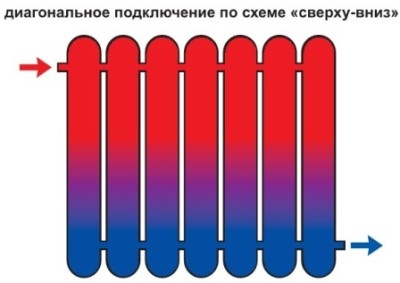
In order to distribute heat evenly throughout the entire room, it is necessary that the coolant be present in equal quantities in all its parts.
In city apartments, water circulation in the system occurs by force under high pressure.
That is why the diameters of both inlet and outlet pipes are very small - about 20 millimeters. It is through their lumen that the coolant passes. The container quickly fills up.
The process of connecting a heating radiator using a diagonal scheme
In order to realize all the advantages of diagonal connection of radiators, it is necessary carry out the installation process correctly. To do this, you need to understand what tools you need, how to apply markings correctly and how to install certain elements.
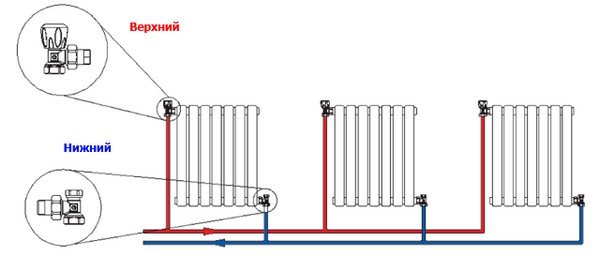
Photo 1. Diagram of diagonal connection of heating radiators. Red color indicates hot water supply, blue color indicates cold water drainage.
Necessary tools
A set of necessary elements for diagonal installation radiators:
- several brackets for installing the device;
- transition nuts;
- the required number of plugs;
- air vent (Maevsky tap);
- quick-release couplings of the "American" type;
- shut-off valves.
All of the above parts can be purchased either as a set or separately. To work with these products you will need the following tools::
- pipe cutters;
- calibration;
- press pliers;
- open-end and adjustable wrenches;
- pipe benders.
In cases where pipes and radiators are made of different materials, you may need adapters and special technical means to join them.
Application of markings
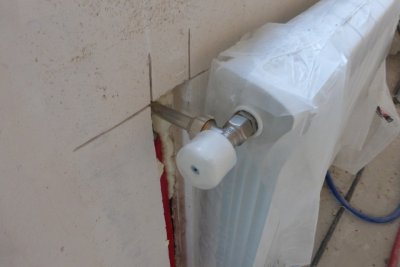
In order to correctly install a battery, it is necessary to follow certain rules and regulations.
It is not always possible to remember them during the work process.
That's why pFirst, you should apply the appropriate markings to the wall, according to which actions will be performed.
In this regard, specialists The following three important points are highlighted:
- The distance from the bottom of the window sill to the top edge of the radiator should be from 5 to 10 centimeters. This is necessary to allow the heated air to circulate normally around the room. This placement of the radiator affects the level of heat output.
- There should be space between the floor covering and the bottom of the radiator not less than 8-12 centimeters. This condition is associated with convection currents of heated air.
- The last rule concerns the gap between the radiator sections and the wall itself. Normally, it should vary from 2 to 5 centimeters.
Attention! In accordance with all the above standards it is necessary using a regular pencil make marks on the wall. This will significantly help to simplify the work and prevent the risk of possible errors.
Mayevsky crane
Such a mandatory element of the heating system as the Mayevsky crane is a special product used to remove air locks from the heating networkIt is opened with a key or a screwdriver.
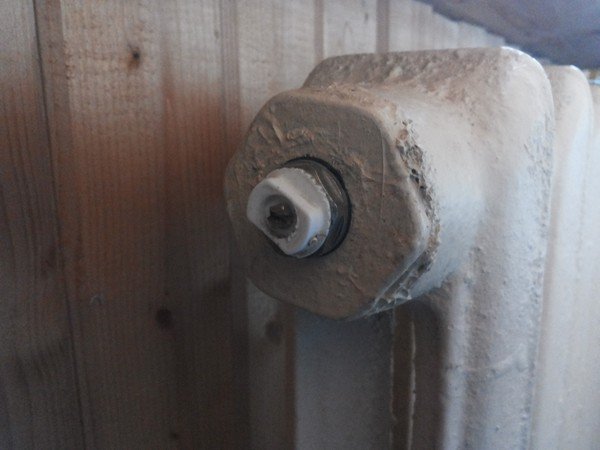
Photo 2. Mayevsky crane installed on a cast iron radiator. Allows you to release excess air from the heating system.
The accumulated air in the batteries is capable of not only paralyze circulation hot water, but also start the corrosion process. Since the product is designed to remove air masses from radiators, it is installed mainly in places where this problem most often occurs. To do this, simply unscrew the side plug of the section, and then screw the tap into its place.
Installation of "Americans"
It is essential to connect the pipes to which the water supply and drainage pipelines are connected. special metal couplingsThey are most often called "Americans".
In order to install them, you need to use a special key. It is inserted into the lumen of the Mayevsky crane, after which the "American" is put on top. The main thing is to select the key correctly, since it can be various diameters and configurationsIn some cases, regular adjustable wrenches and pliers can be used.
Screwing in the valves
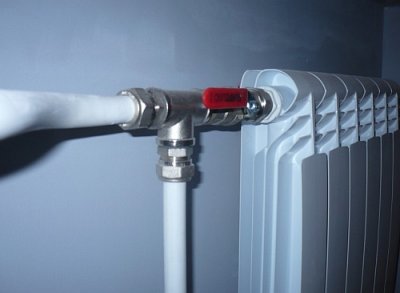
As a result, the “Americans” join the ration shut-off valvesOne element must be installed on each branch pipe.
This will allow you to cut off a specific radiator from the general heating system if necessary. At the same time, the entire heating network of the room will continue to operate in the normal mode.
Installation of valves also occurs by screwing. It is made between the radiator and a special jumper that drains water from the lower pipe to the upper one if the tap is closed.
Radiator installation
Installing radiators in a diagonal pattern is quite simple and fast. It has some small features that distinguish it from other installation methods. The main thing to remember is that this method is rarely used in city apartments, since it is mainly intended for the private sector and detached houses.
Useful video
Watch the video, which demonstrates all possible radiator connection schemes and their features.
Is it suitable for apartments?
Diagonal connection of heating radiators is quite specific. The process of connecting a radiator using a diagonal scheme involves applying special markings, installing a Mayevsky crane, special couplings, and valves. Most often used in private houses, not apartments.








Comments